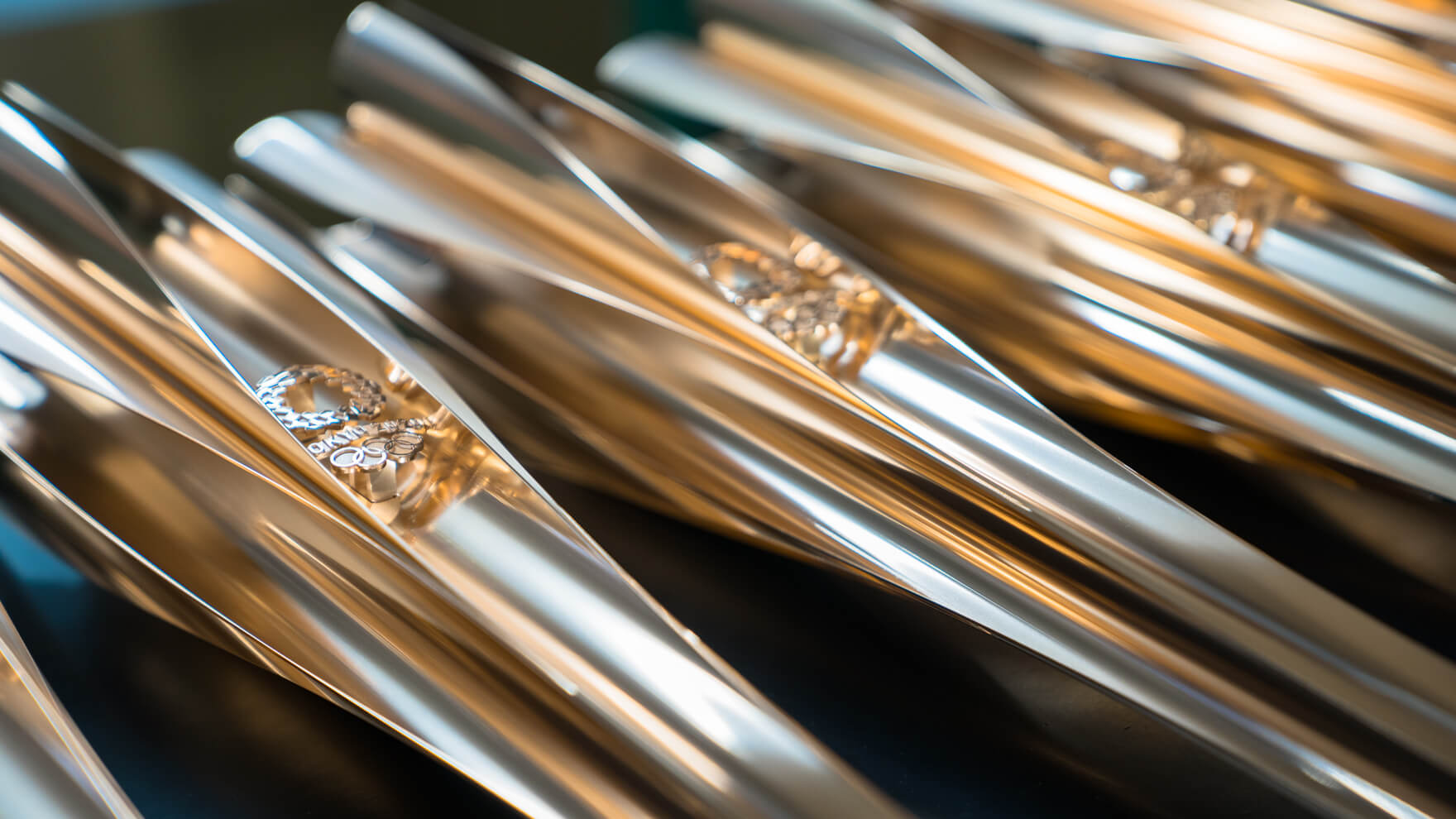
The combustion mechanism of Tokyo 2020 Torch Relattouch, which has achieved a "beautiful, inexhaustible flame" was born from outdoor burner technology.
On March 26th, if we continue as planned, the Tokyo 2020 Olympic Torch Relay will finally start in Fukushima Prefecture. *
*As of March 25th, unfortunately, the Tokyo 2020 Olympics have been postponed, and the torch relay, which is scheduled to start in Fukushima on the 26th, will be set to set a new date in line with the time of postponement of the Games.
This may be a topic that has nothing to do with outdoor enthusiasts reading this. However, did you know that the torch used in this torch relay is deeply involved with the technology of the combustion mechanism of outdoor burners?
This time, I was able to visit Shin Fuji Burner, which is in charge of the combustion mechanism for the Tokyo 2020 Torch Relate Teach. On the day of the interview, the Tokyo 2020 Olympics Torch, which has a total of 10,000 films, is currently being assembled rave reviews.
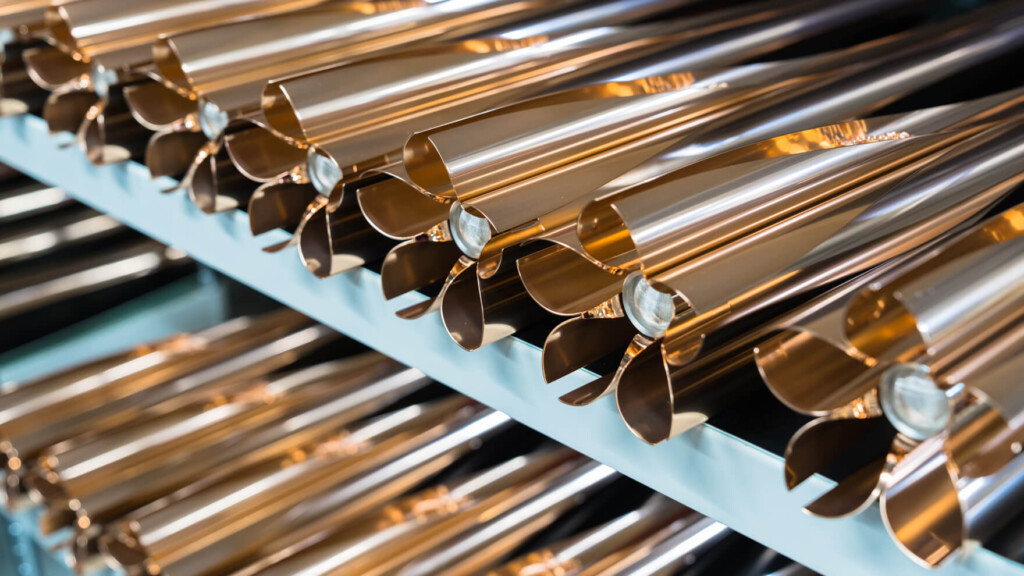
The Olympic torch relate tickets lined up. A rare sight.
There, we were able to not only show the story behind the development of the Tokyo 2020 Torch Relate Teach, but also show the valuable torch burning tests. So, this time I would like to share with you about this day, where I was able to experience the passion for making tools, not just outdoors.
table of contents
Tokyo 2020 Torch Relate Teach Challenge
The torch, which Yoshioka Tokuhito, was inspired by the cherry blossom paintings he drew with children from the disaster-stricken areas of Fukushima Prefecture, was designed by Yoshioka Tokuhito with the motif of "cherry blossoms." It has a seamless design made using the technology called "aluminum extrusion molding," which is also used in the manufacture of Shinkansen and other trains. The Olympic torch lelate touch is called "Sakura Gold," a pale pinkish golden color inspired by the blossoming of cherry blossoms, while the Paralympics show subtle differences in color at each of the two tournaments: "Sakura pink," an image of the cherry blossoms in full bloom.
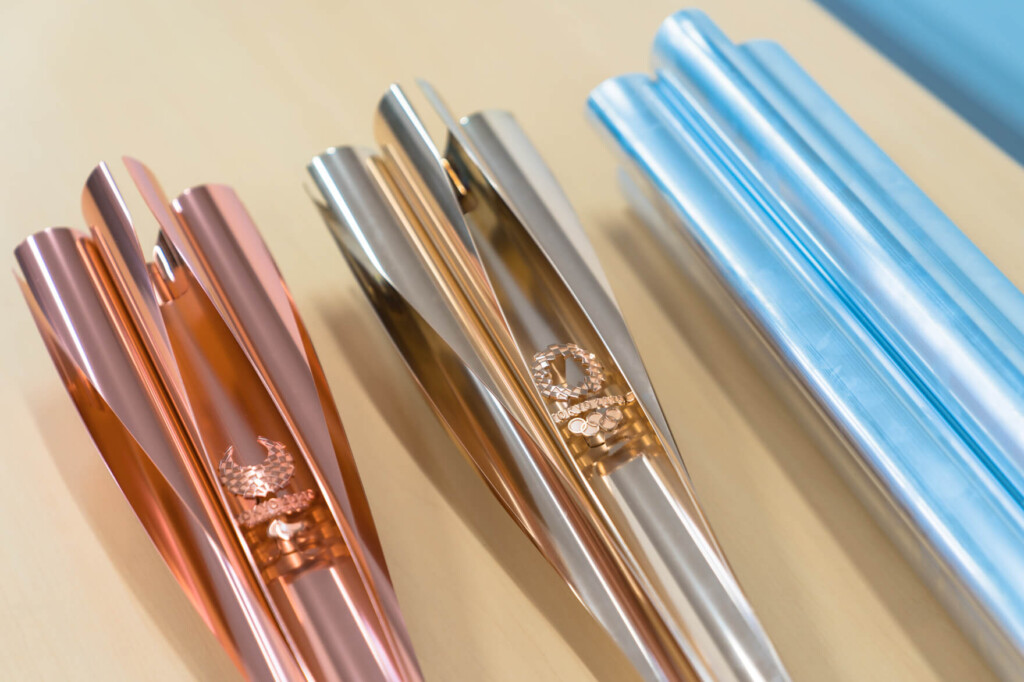
From right, the aluminum is immediately molded by aluminum extrusion molding, the Olympic torch, and the Paralympic torch.
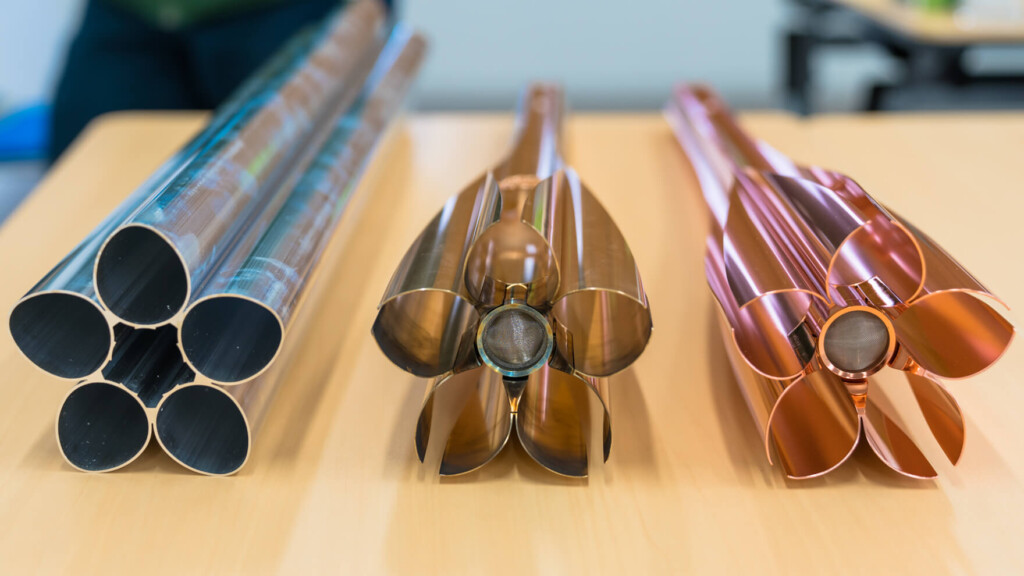
From left to right are the aluminum, the Olympic torch, and the Paralympic torch, which are immediately molded by extrusion molding.
Yoshioka apparently asked about the production of the torch's combustion mechanism, which is a total of 100 burner companies in Japan, but most of them were rejected as "impossible."
That's right, the Olympic torch relay would be fine in Europe, where there is a relatively stable climate, but the situation is different in Japan. The event begins in early March, which is still dry and chilly, and runs through June, during the humid rainy season, and until July, midsummer, where temperatures reach nearly 40°C, the event takes place in a variety of weather conditions. Even in such harsh weather, the torch had to be equipped with high performance that kept the beautiful flames intact and still intact. There's no way a burner company can meet such an impossible problem can be found so easily.
However, finally, the only company that responds to the conversation appears. This is the new Fuji Burner, which is well known to us outdoor enthusiasts. I met designer Yoshioka in November 2017.
The combustion mechanism is to "not disappear" and "see beautifully," and in the harsh environment of Japan, which has four seasons. There was a challenge out there that no one else had done before, and it was worth the challenge for us.
This is what Yamamoto Hiroshi, managing director of Shin Fuji Burner, spoke to me.

The person who spoke about the torch burning mechanism was Yamamoto Hiroshi, Managing Director of Shin Fuji Burner.
How did the "beautiful and inexhaustible" flame come to fruition?
Starting with "Platinum Lantern"
A beautifully colored flame like a real torch is a flame that is in such a way that there is little air coming in through the air inlet, and in itself is relatively easy to create. However, this can cause a flame to be weak at low temperatures and can easily be easily extinguished by rain and wind.
Since it is a torch, if you prioritize that it does not go out, the burner will need to create a strong flame mixed with sufficient oxygen, resulting in a blue, transparent flame. Anyone who has seen the torch relays from past competitions may know, but in most cases, even if it is a torch, the flames were generally transparent and difficult to see in daytime relays.
If I were to make a torch, I wonder if I could somehow make it a beautiful flame that glows beautifully even in the daytime. Yamamoto was thinking about it all the time.
After thinking about it as a way to realize that the flames are beautifully shaking even during the day and still not going out, I suddenly came to my mind when I realized that the mechanism of a platinum lantern made from platinum.
Platinum lanthanum emits light without the need for a mantle or a squirt, and catalytic combustion occurs on its surface due to the catalytic action of platinum. I knew that it was wind-resistant due to its structure, so I wonder if that mechanism could be applied to a torch. The combustion mechanism of the torch relate ticket was decided from there.

It is packed into a small combustion mechanism, which is only about 3cm in diameter and 15cm in height, and is packed with a mechanism that creates a beautiful, inexhaustible flame.
A beautiful flame and the mechanism of combustion that never erases it
What we arrived at was a completely new combustion mechanism that combines two combustion parts: the surrounding area that creates a beautiful flame the central part that keeps the flames (and makes them look beautiful) so that they do not go out.
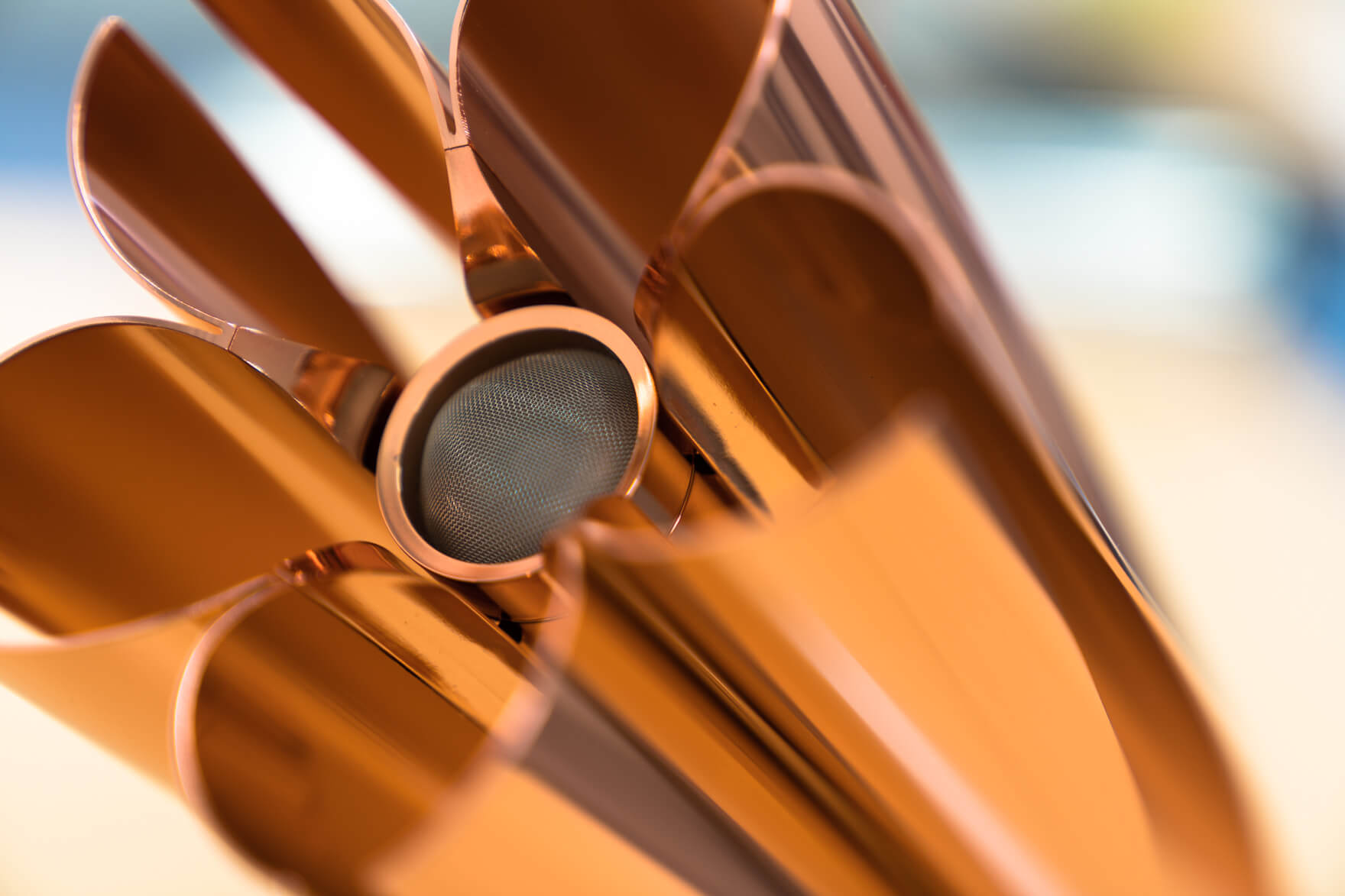
In the center is a platinum dome, which controls the fire and flame retention functions, and a fine red flame crater opens at the base of the cherry blossom petals.
The flames in the periphery are blown out of the five-separated cherry blossom petals and are designed using careful calculations to assemble into one at approximately 35cm above the torch.
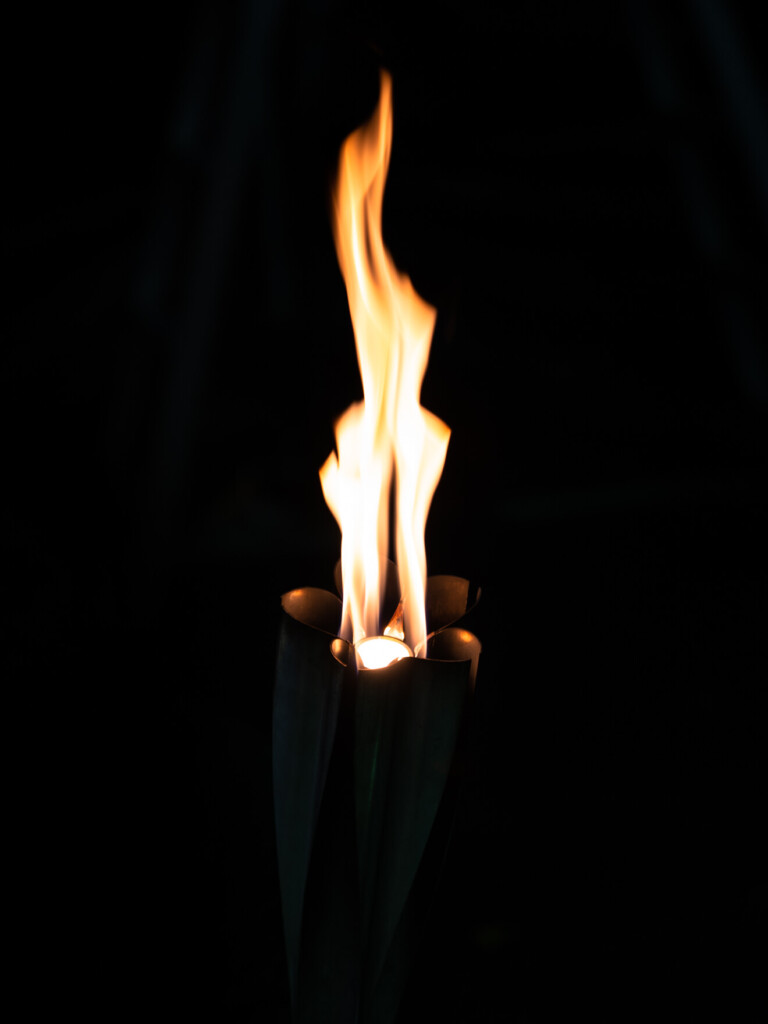
Fires erupted from five (specifically ten) assemble into one above them, creating a flame that looks like a real torch. *Uses a test torch
And the platinum part in the center continues to shine (the blue flame of the burner continues to appear under the platinum dome). It is extremely strong against the rain and wind, and catalytic combustion is effective even if the wind is about to go away, so it is always kept flame-retaining. For this reason, although the surrounding fire tends to go out as a flame, it can always burn beautifully thanks to its central flame retention function.
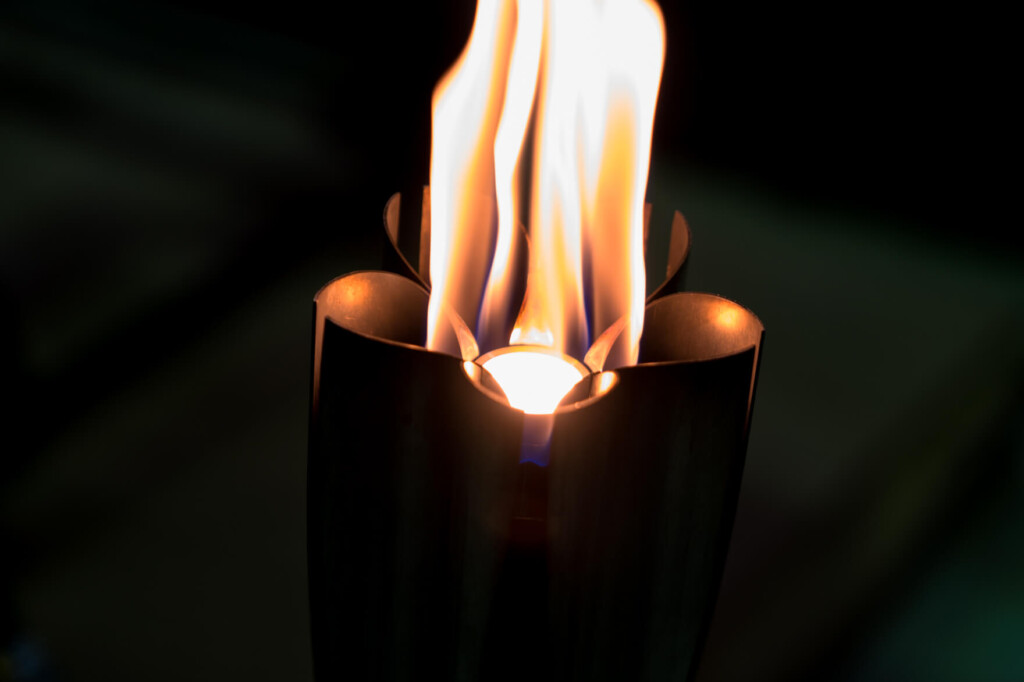
The platinum dome in the center always emits a dazzling glow, keeping the surrounding flames not quenched, while bringing out the beauty of the entire torch. *Uses a test torch
In other words, the red flame in the surroundings, the blue burner burner, and the catalytic platinum burning are fused together to create an inexhaustible torch.
The brilliance of the platinum itself is combined with the red flame of a torch around it, maintaining its beautiful flame shape, and the platinum in the center also serves as a flame-retaining feature. This technical point is the mechanism of dividing the flame into two, and is a major point in creating an unprecedented, stable and beautiful torch.
They tried to see how resistant it is to the wind and rain.
This time, we were shown wind and rain resistance tests at the experimental building located on the grounds of Shin-Fuji Burner headquarters. First, let's start with the wind resistance test. The test torch relay ticket is lit and let the wind blow at a 17-meter wind speed.

During the test, the wind was directly hit with a 17-meter wind speed, but there was no sign of the flame going out. *Uses a test torch
As shown in the photo below, the wind-blowed flames flickered like they were wrapped around the torch, but they continued to burn without ever going out. Speaking of wind speeds of 17 meters, the torch relay event is actually in danger, but testing has confirmed its safety to that level.
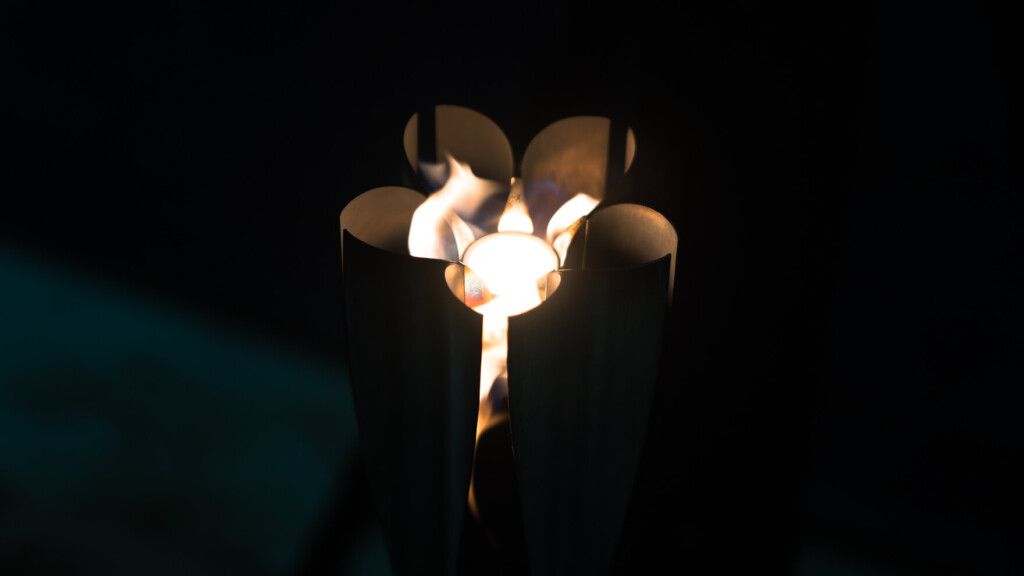
The flames fluttering inside the petals as if to avoid the wind were constantly burning due to the platinum in the center. *Uses a test torch
Next is the rain resistance test. It will cause heavy artificial rain and place a test torch underneath.

Rainproofing test. As you can see from the umbrella, it's raining quite a bit.
Again, the platinum in the center continued to glow white, repelling the rain, and the surrounding flames did not blew. The test also apparently showed that the rain was expected to be in a 50 mm/h of rain.
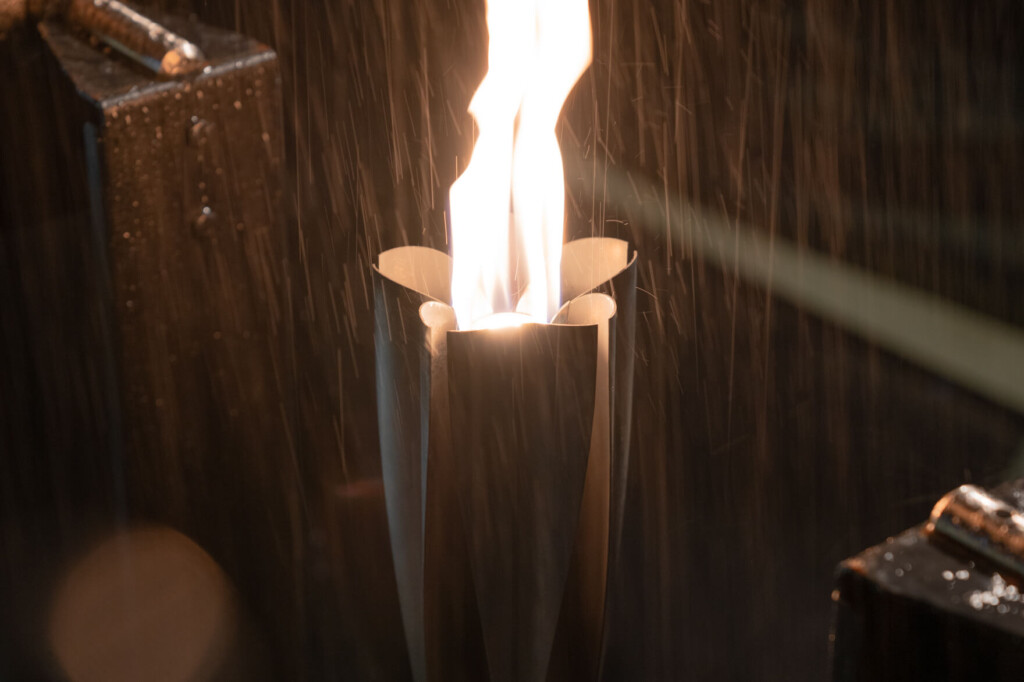
The raindrops that fell on the Platinum Dome evaporated, making a thud, and the flames didn't blew.
Further mechanisms to keep the shape of a beautiful flame
There is another barrier to overcome to make the flame look beautiful at all times. That's the temperature difference. A typical gas burner is less likely to let gas out during low temperatures in winter, and more likely to blow out during high temperatures in summer. In other words, the way gas is vented differs depending on the temperature, so the size of the flame also changes. This makes it difficult to keep the flame in a "beautiful state" all the time.
In fact, the solution to this is the technology derived from Shin Fuji Burner's outdoor burner. This is a "micro regulator" mechanism developed to maximize the firepower of the burner even in winter and high mountain climbing. This function maintains the gas pressure constant at any temperature, and by installing this mechanism in the torch relay ticket, the flame is adjusted so that it is always "approximately 35cm tall" in any environment, from early spring in March to midsummer in August.

The left is hot water at around 40°C, and the right is ice water at close to 0°C. The size of the flame remains the same in either situation.
Challenge to universal design
Light and small
I was surprised to see that it was much lighter than it looked after having the torch relate ticket. In fact, this also reflects the thoughts of designer Yoshioka and the technical capabilities of the manufacturers of Shin Fuji Burner and other manufacturers who made this happen.
Initially, the combustion mechanism was made larger than the final model, but as we went on to pursuing it, we were asked to make it even more compact. In the process, we will produce nearly 100 types of samples, reducing the size and weight to the limit.
As a result, we have created 10 new tints, and managed to make the tint smaller to about 3cm, less than half the original.
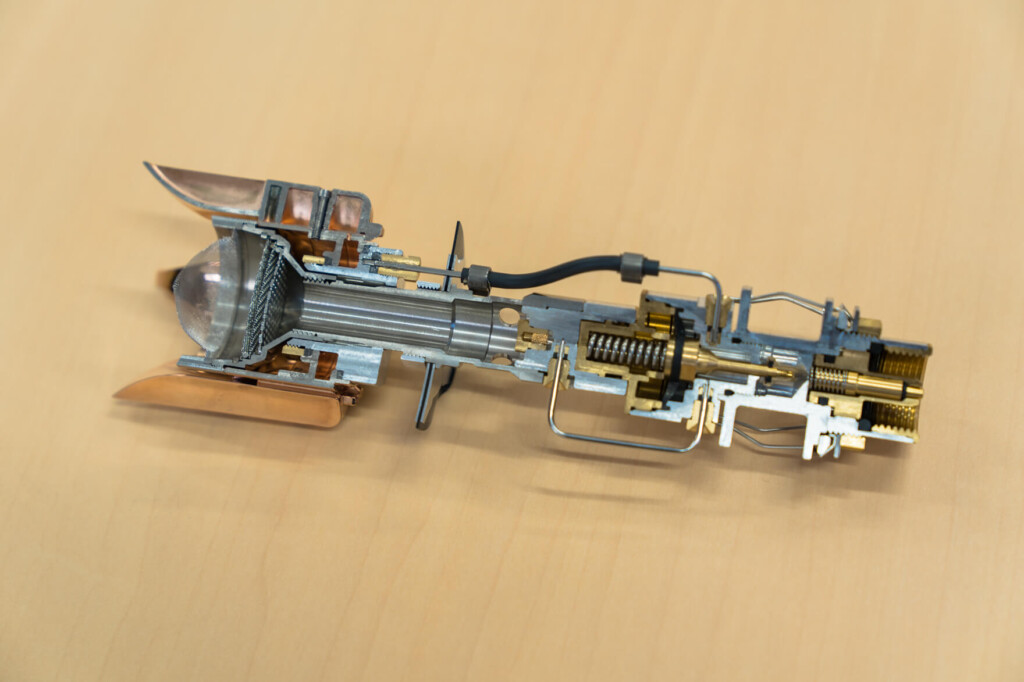
A cross-sectional model that shows the inside of the combustion mechanism. The gas erupted from below is divided into a passage that leads to the central Platinum Dome and a passage that flows into the side crater.
Easy to hold and hard to drop
The best part is the grip part where the fuel cylinder is stored.
This torch contains enough fuel to burn for up to 15 minutes (actually it is expected to run around 200m). Naturally, the part where the flame is ignited will bring heat to the point where it is ignited, so the handles of a torch made of seamless aluminum will become too hot to hold. But that doesn't happen with this torch.
The reason for this is that if you've used a gas stove outdoors, you'll understand that when the burner burns, the temperature of a gas cylinder will drop due to the heat of vaporization. This torch takes advantage of its reduced cylinder temperature and is designed to prevent the handle from getting hot even while the torch is burning. The material is made of aluminum and the thickness of the aluminum, and it is all carefully thought out, even the balance between heat exchange and lightness. Instead of simply making it thinner by saying, "Just as long as it's light," it is made to be an exquisite thickness that doesn't lose its ease of use. From the perspective of not only being perfect as a combustion mechanism, but actually using it, the designer Yoshioka and other manufacturers' spirit of creating truly good things is carried out without compromise down to the smallest details.
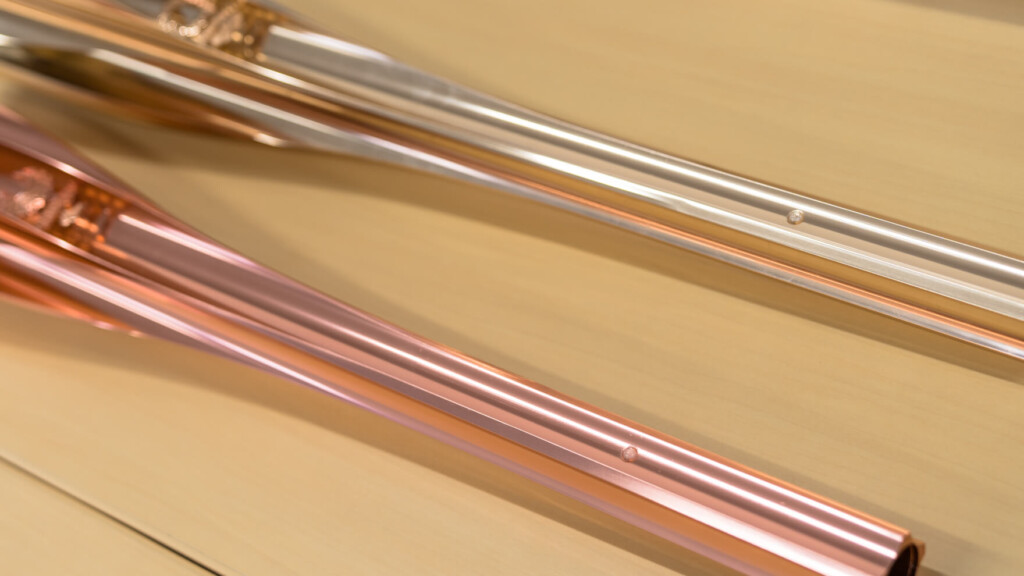
Despite being thin aluminum, the grip does not get hot even when it continues to burn, and has protrusions that allow visually impaired people to grasp the direction. Tools that make it the best use are for everyone to choose from.
If you just want to lighten it, titanium is fine. However, considering using thermal conductivity, materials such as copper and aluminum are options. On the other hand, there is also the element of "reconstruction." How wonderful it would be to reuse the aluminium construction waste materials from temporary housing reconstruction caused by the Great East Japan Earthquake. Based on the planning and design of designer Yoshioka, all of the various requirements have been met, and he has arrived at this finished product. I can only admire its professionalism, which achieves such perfection as an industrial product.
summary
Design as a graphic, design as a structure, design as a function, all of these combined, and with the story of the earthquake and reconstruction on its shoulder, the torch relattice was beautifully brought to fruition as a product that can be used with your eyes and picked up with your hands. This time, by first touching on the pure and strong feelings contained in the torch relate ticket and the uncompromising craftsman's spirit, there is no doubt that my personal attachment to the Olympics and Paralympics has deepened my personal feelings towards the Olympics and Paralympics.
When it comes to the Olympics and Paralympics, competitions and athletes tend to attract attention. However, it is safe to know that even in the smallest detail of the combustion mechanism of the torch, the stories of the thoughts and passions of many people who are poured into the Olympics and Paralympics equally lie in the story.
Tokyo 2020 Torch Relate Teach Producer
- Planning and Design Yoshioka Tokuhito Design Office
- Torch housing UACJ Co., Ltd. extrusion processing
- Materials LIXIL Co., Ltd.
- Combustion mechanism Shin Fuji Burner Co., Ltd.
- Fuel supply and fuel cylinder ENEOS Glove Co., Ltd.
For more information or inquiries about the Tokyo 2020 Olympic Torch Relay, please the official website .

